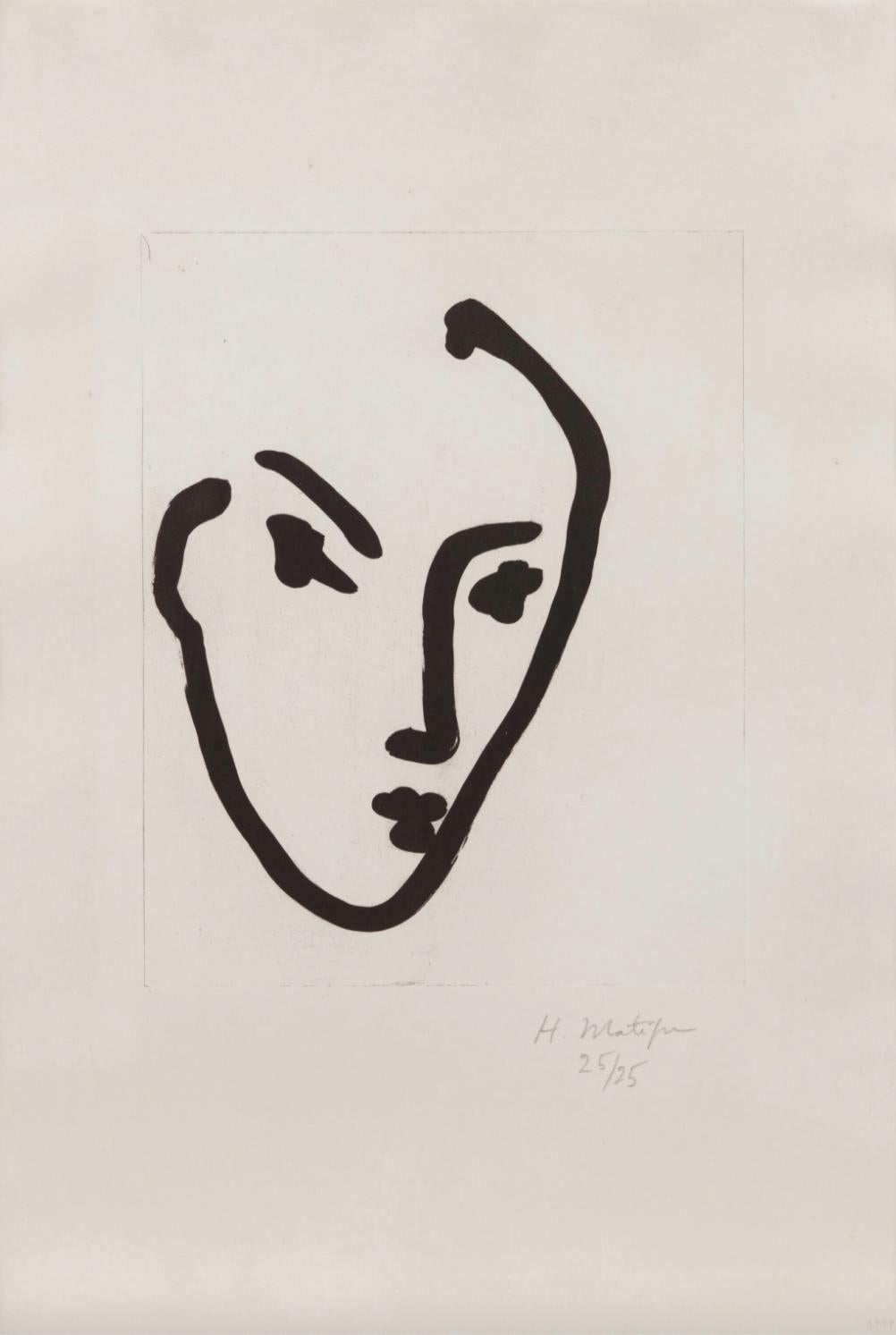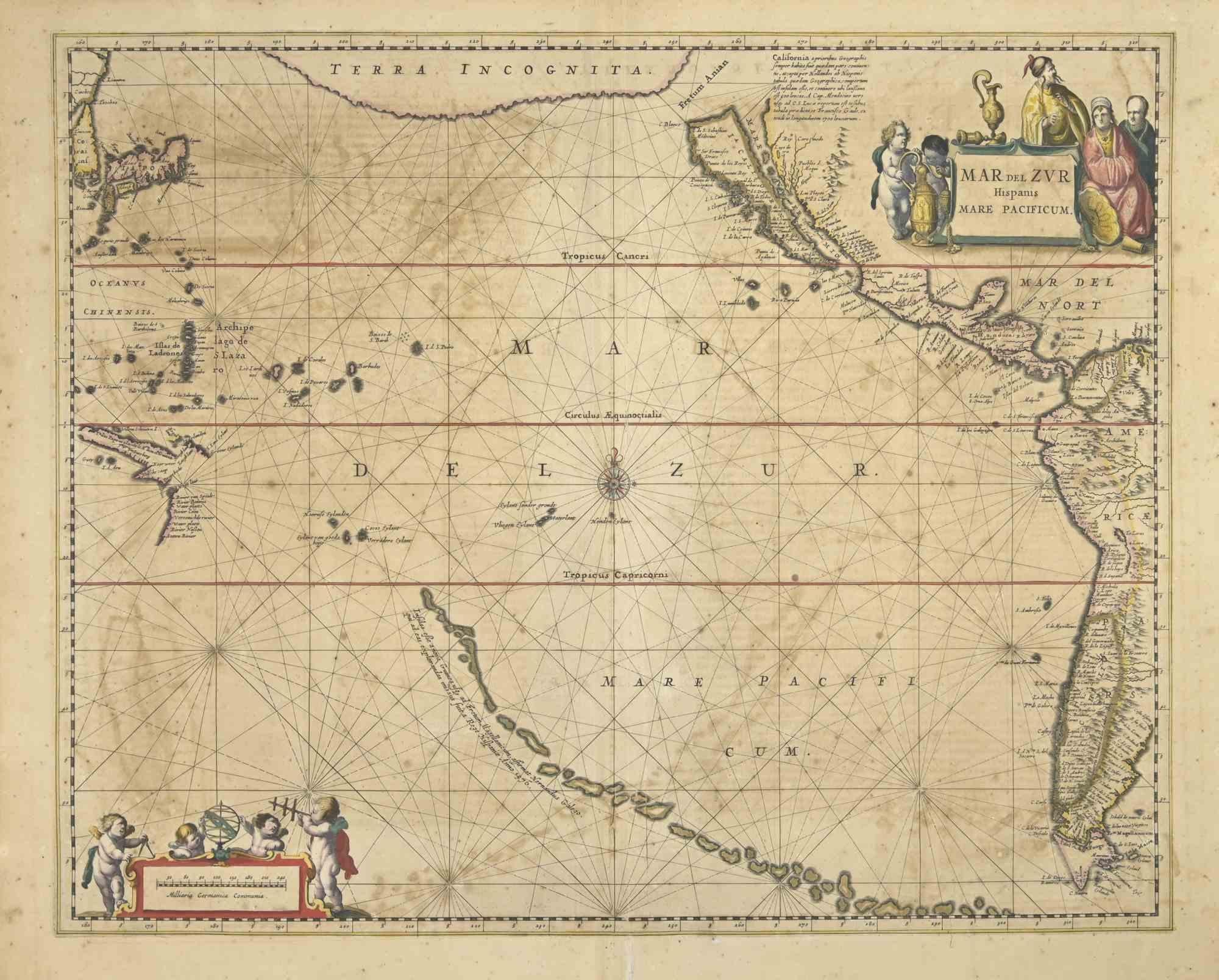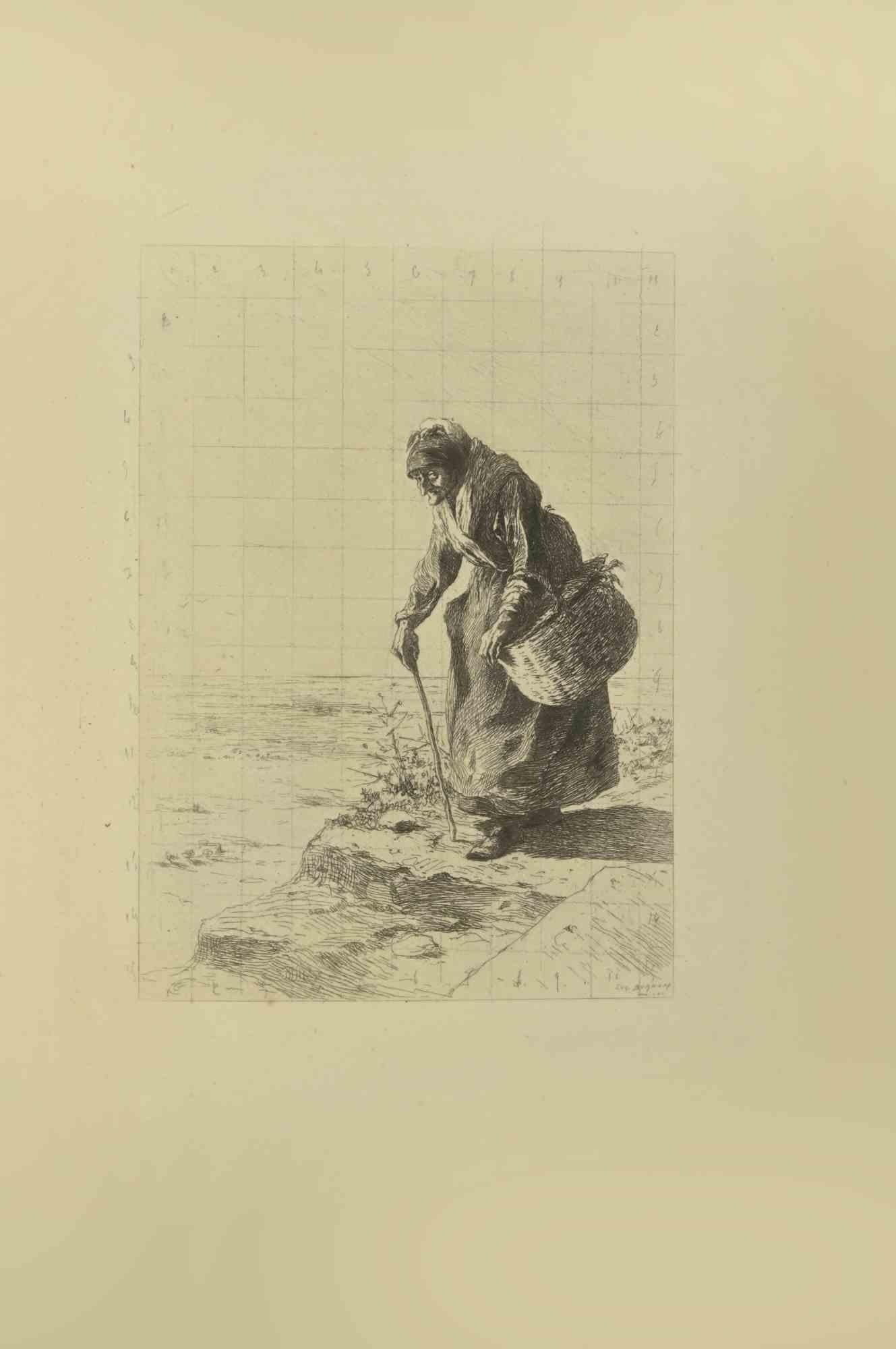Items Similar to Tan Barbara la Seguridad Como el Delito - Etching by Francisco Goya - 1867
Want more images or videos?
Request additional images or videos from the seller
Francisco GoyaTan Barbara la Seguridad Como el Delito - Etching by Francisco Goya - 18671867
1867
About the Item
The custody is as barbarous as the crime (Tan barbara la seguridad como el delito) is an artwork realied by Francisco Goya y Lucientes, 1867.
Paris: Delâtre, 1867.
Etching and burin.
cm. 10.5x8.4.Sheet 21x16.2.
Excellent proof of III state and first edition after the appearance of the letter and the bevel of the plate, published in the Gazette des Beau-Arts, vol. XXII, p. 196.
Ref. Harris 26
Intact sheet with wide margins. Slight exposure yellowing around image.
Francisco José de Goya y Lucientes (Fuendetodos, March 30, 1746 - Bordeaux, April 16, 1828) was a Spanish painter and engraver. Considered the pioneer of modern art, he was one of the greatest Spanish painters who lived between the late eighteenth and early nineteenth centuries. His paintings, drawings and etchings of him reflected the ongoing historical upheavals and influenced the most important contemporary and following century painters. Goya is often referred to as the last of the old masters and the first of the moderns. Born into a middle-class family in 1746 in Aragon, he was a pupil of painting from the age of 14 to José Luzán y Martínez, later moving to Madrid to study with Anton Raphael Mengs. In 1786 he became court painter to the Spanish crown and this first part of his career was characterized by numerous portraits of members of the Spanish aristocracy and royal family, as well as by the production of rococo tapestries for the royal palace.
In 1793 he suffered from an undiagnosed serious illness which left him deaf, after which his work became progressively darker and more pessimistic. His subsequent paintings seem to reflect a bleak vision of existence, which contrasts with his resounding social ascent: in 1799, in fact, he became Primer Pintor de Cámara (First Court Painter), the highest rank for a Spanish court painter . In late 1799, commissioned by Godoy, he completed his Maja desnuda, a remarkably bold nude for the time and clearly inspired by the style of Diego Velázquez. In the early 19th century he painted The Family of Charles IV, again influenced by Velázquez. In 1807, Napoleon led the Grand Army in the Peninsular War against Spain. During the conflict Goya remained in Madrid and, although he never expressed his thoughts in public, it seems that these facts affected him deeply, as can be seen from some of his works such as The Disasters of War, The 2nd of May 1808, The 3rd May 1808. Other works of his maturity include a wide variety of paintings concerning madness, asylums, witches, fantastic creatures, and religious and political corruption, which suggest that he feared for his mental and physical health. His later period culminates with the Black Paintings of 1819-1823, made in the Quinta del Sordo, his home on the outskirts of Madrid where he lived, disillusioned by political and social developments in Spain, in a situation of almost isolation. Finally, in 1824, Goya decided to abandon Spain to retire to the French city of Bordeaux where he completed his series La Tauromaquia and a number of other important canvases. Towards the end of his life a stroke left him paralyzed on his right side. He died and was buried on April 16, 1828 at the age of 82. His body was later transferred to the Church of San Antonio de Florida in Madrid.
- Creator:Francisco Goya (1746 - 1928, Spanish)
- Creation Year:1867
- Dimensions:Height: 8.27 in (21 cm)Width: 6.38 in (16.2 cm)Depth: 0.04 in (1 mm)
- Medium:
- Movement & Style:
- Period:
- Framing:Framing Options Available
- Condition:Insurance may be requested by customers as additional service, contact us for more information.
- Gallery Location:Roma, IT
- Reference Number:
Francisco Goya
Francisco José de Goya y Lucientes (1746-1828) was a Spanish romantic painter and printmaker. He is considered the most important Spanish artist of the late 18th and early 19th centuries. His works often contained a social message, like in his "Disasters of War" series. Immensely successful in his lifetime, Goya is often referred to as both the last of the Old Masters and the first of the moderns. He was also one of the great portraitists of his time.
About the Seller
4.9
Platinum Seller
These expertly vetted sellers are 1stDibs' most experienced sellers and are rated highest by our customers.
1stDibs seller since 2017
6,771 sales on 1stDibs
Typical response time: 3 hours
- ShippingRetrieving quote...Ships From: Grasse, France
- Return PolicyA return for this item may be initiated within 14 days of delivery.
More From This SellerView All
- Ancient Map - Zeilan - Etching by Johannes Janssonius - 1650sBy Johannes JanssoniusLocated in Roma, ITAncient Map - Zeilan is an ancient map realized in 1650 by Johannes Janssonius (1588-1664). The Map is Hand-colored etching, with coeval watercoloring. ...Category
1650s Modern Figurative Prints
MaterialsEtching
- Orbis Terrarum - Etching by Johannes Janssonius - 1650sBy Johannes JanssoniusLocated in Roma, ITAntique Map - Orbis Terrarum is an antique map realized in 1650 by Johannes Janssonius (1588-1664). The Map is Hand-colored etching, with coeval watercoloring. Good conditions with...Category
1650s Modern Figurative Prints
MaterialsEtching
- Antique Map - Mare Pacificum - Etching by Johannes Janssonius - 1650sBy Johannes JanssoniusLocated in Roma, ITMare Pacificum is an antique map realized in 1650 by Johannes Janssonius (1588-1664). The Map is Hand-colored etching, with coeval watercolorang. Good conditions with slight foxing...Category
1650s Modern Figurative Prints
MaterialsEtching
- Old Woman with Stick - Etching by Eugène Burnand - Late 19th centuryLocated in Roma, ITOld Woman with Stick is an etching realized by Eugène Burnand (1850-1921) in the Late 19th century. Signed on the plate. Good conditions with foxing. The artwork is realized thro...Category
Late 19th Century Modern Figurative Prints
MaterialsEtching, Engraving
- Map of Mar Del Nort - Etching by Johannes Janssonius - 1650sBy Johannes JanssoniusLocated in Roma, ITAntique Map -Mar Del Nort is an antique map realized in 1650 by Johannes Janssonius (1588-1664). The Map is Hand-colored etching, with coeval watercolorang. Good conditions with sl...Category
1650s Modern Figurative Prints
MaterialsEtching
- In The Garden - Etching by Eugène Burnand - Late 19th centuryLocated in Roma, ITIn The Garden is an etching realized by Eugène Burnand (1850-1921) in the Late 19th century. Signed on the plate. Good conditions with foxing. The artwork is realized through sh...Category
Late 19th Century Modern Figurative Prints
MaterialsEtching, Engraving
You May Also Like
- Nadia au regard attentifBy Henri MatisseLocated in London, GBAquatint on Marais wove paper Edition of 25 Signed and numbered 25/25 in pencil lower right Duthuit 794Category
Mid-20th Century Modern Prints and Multiples
MaterialsAquatint
- Fumeur à la Cigarette BlancheBy Pablo PicassoLocated in London, GBEtching and aquatint in colours, 1964, on Richard de Bas wove paper, signed in pencil and numbered 41/50 from the edition of 50, printed by Pennequin for Atelier Crommelynck, publish...Category
1960s Modern Figurative Prints
MaterialsEtching
- Fly Fishing, Saranac LakeBy Winslow HomerLocated in Storrs, CTFly Fishing, Saranac Lake. 1889. Etching, aquatint and burnishing. Goodrich 104. 14 1/4 x 20 5/8; sheet 18 1/2 x 24 1/2. Edition unknown but quite possibly intended 100; highest numb...Category
Late 19th Century American Modern Figurative Prints
MaterialsEtching
- Le Cocu Magnifique -- complete illustrated book with 12 original etchingsBy Pablo PicassoLocated in New York, NYAbout In-folio Oblong Dimensions : 29x39 cm. Paris Atelier Crommelynck 1968 Edition #41 of 200 copies including 12 original out-of-text etchings (7 etchings, 4 etchings and aquatint...Category
Mid-20th Century Modern Figurative Prints
MaterialsDrypoint, Etching, Aquatint
- Homme dévoilant une Femme. (Man uncovering a woman).By Pablo PicassoLocated in Storrs, CTHomme dévoilant une Femme. (Man uncovering a woman). 1931. Drypoint. Bloch 138; Baer 203 B.d. Vollard Suite, plate 5. Printed by: Lacourie...Category
Mid-20th Century Modern Portrait Prints
MaterialsEtching
- Le peintre au cirqueBy Pablo PicassoLocated in Wien, 9- Plate 55 from the Suite 156 - with stamp signature - dated in the plate 2.3.70 - edition 26/50 - cat. raisonné Bloch 1910Category
1970s Modern Figurative Prints
MaterialsDrypoint, Etching
Recently Viewed
View AllMore Ways To Browse
Liquer Vintage Posters
Magritte Victoire
Peter Wever On Sale
Pool Of Tears Dali
Romare Bearden Ap
Ruben Salazar
Salvador Dali Le Baiser
Sur La Plage Renoir
Tell Me Beautiful Untrue Things
Van Poelenburgh
Rolex Portfolio
2 Nus
John Kacere On Sale
Rebecca Denton
Capri Etching
Chris Nowicki
Saul Steinberg On Sale
Charles Leandre






